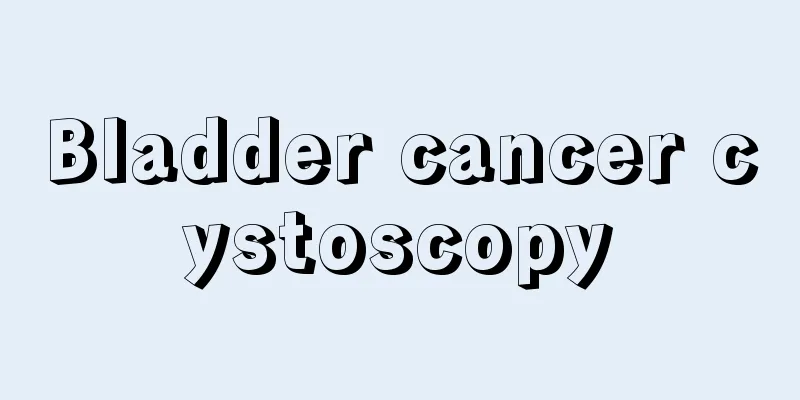What are the symptoms of hepatobiliary diseases

|
Hepatobiliary diseases are a common type of disease among the Chinese population. There are many types of hepatobiliary diseases, such as hepatobiliary stones, liver cysts, cholecystitis, fatty liver, various viral hepatitis, etc. Patients often feel fatigue, loss of appetite, and side pain. Some may also experience jaundice and fever. Once you find the above discomforts in your body, you must go to the hospital for examination in time for early diagnosis and treatment. 1. What is hepatobiliary disease? Hepatobiliary diseases belong to the category of TCM internal medicine. Its contents include: jaundice, flank pain, gallbladder distension, and bloating. The basic pathogenesis of hepatobiliary diseases is that the liver fails to release and the gallbladder fails to descend. 2. Common symptoms of liver disease 2. Main symptoms of liver disease 1. Pain If you have pain in the right upper abdomen and feel bloated, you should consider the possibility of liver disease. The liver is located in the upper right abdomen of the human body. However, it is worth noting that since the gallbladder is attached to the liver, the friction of the gallbladder or other organs may also radiate here. Once symptoms appear, it is not necessarily a liver disease, and it is common for them to be unrelated to liver disease. 2. Ascites Accumulation of fluid in the abdominal cavity is called ascites. This is not caused by water leaking from the gastrointestinal tract into the abdominal cavity. When liver tissue is damaged, lymph will leak out from the surface of the liver. At the same time, when liver function deteriorates, the protein concentration in the blood decreases, which will reduce the blood osmotic pressure and cause water in the blood to seep out of the blood vessels. Sometimes it can also be caused by inflammation of the peritoneum covering the surface of the internal organs and the inner side of the abdominal wall or by exudation of fluid from abscesses. When there is too much accumulated ascites, the abdomen will swell, which is often called frog belly. 3. Abnormal skin Although the liver is located in the abdomen, abnormal symptoms on the skin may sometimes be related to liver disease. For example, spider nevi, liver palms, varicose veins of the abdominal wall, etc. 3. Main symptoms of hepatobiliary diseases 1. Nausea, vomiting, and loss of appetite. This is mainly due to metabolic abnormalities in patients with hepatobiliary diseases. 2. The patient will feel a low fever. This is mainly seen in acute icteric hepatitis. 3. Often feel weak and unusually tired. This is mainly because after the liver is damaged, it cannot digest and absorb nutrients normally, resulting in a decrease in glycogen and insufficient supply. 4. Symptoms of jaundice. Patients with hepatobiliary diseases may also experience yellow sclera, yellow skin, and yellow urine, which is mainly caused by high bilirubin in the body of patients with hepatobiliary diseases. 5. Symptoms such as bleeding gums, decreased immunity, pain in the liver area, and abdominal distension. 4. Key points of prevention and treatment 1. Liver and gallbladder diseases are mostly caused by dampness and heat, and the treatment should be to clear away heat and dampness, soothe the liver and promote bile secretion; if it is caused by epidemic toxins invading the body with dampness and heat, and the liver and gallbladder are affected at the same time, the treatment should be to clear away heat and detoxify, clear away heat and dampness, and appropriately use products that soothe the liver and promote bile secretion, and clear the bowels and remove blood stasis. 2. The liver and gallbladder are closely related to the spleen, stomach and kidneys. When treating liver and gallbladder diseases, the related organs should also be taken into consideration. For example, if the liver is depressed and the spleen is deficient, the treatment should be to soothe the liver and regulate the spleen; if the liver and kidney are deficient in yin, the treatment should be to nourish the liver and kidney; if the liver and stomach are not in harmony, the treatment should be to soothe the liver, harmonize the stomach and reduce counterflow, etc. |
<<: Does smoking harm the liver?
>>: The skin turns red and scratches appear when scratched
Recommend
How to make thick upper eyelids thinner?
Eye health is almost the most important part of p...
What's wrong with chest pain and numbness in mouth
Only when the human body is healthy can it work b...
What exercises can be done to prevent prostate cancer? How to prevent prostate cancer?
In life, many male friends who suffer from prosta...
Nonunion of femoral shaft fracture
As people age, their bones will gradually age, th...
How long can you live with endometrial cancer
Cancer, like a devil, has been eroding women'...
The disadvantages of using goat milk soap
In daily life, we usually use a lot of skin care ...
What are the symptoms of bronchial lung cancer
You may have heard of bronchial lung cancer, but ...
Does pharyngitis affect the thyroid gland?
The throat and thyroid gland are both located in ...
Biological immunotherapy effectively prevents renal cancer metastasis
Kidney cancer is the most common kidney tumor in ...
Experts analyze the causes of lymphoma
In order to effectively treat lymphoma, we must f...
What is the treatment for gastrointestinal neurosis?
Gastrointestinal neurosis is also known as gastro...
What will happen if amblyopia is not treated
Most children nowadays like to play with electron...
What are the sequelae of kidney cancer
What are the sequelae of kidney cancer? In fact, ...
Symptoms of spinal neuritis, two aspects of manifestation
Spinal neuritis is most common in young and middl...
Lymphatic scraping technique
As we all know, lymph is an important detoxificat...









